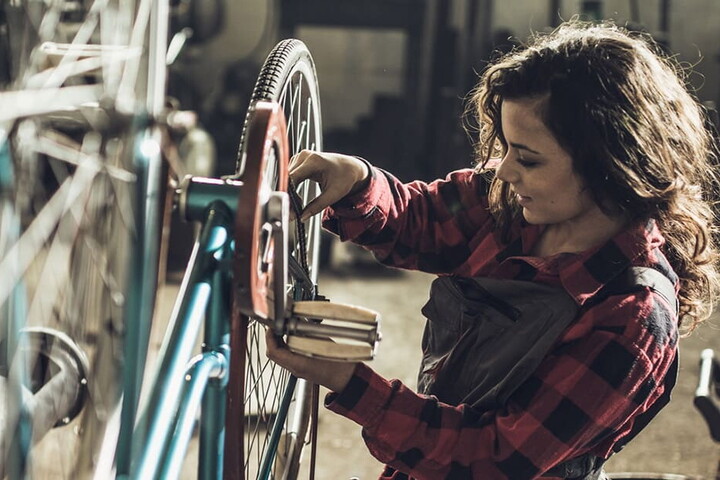A few days of good weather, including during the winter season, should not be allowed to fool you. It can happen that you can find yourself pedalling happily in good weather even in November, but you certainly need to take into account the arrival of winter. The solution is to equip yourself in the best possible way.
It is not true, as some people may say, that you cannot go out on a bicycle during the cold months, in the rain and unfavourable atmospheric conditions. On the contrary, winter can bring you welcome novel sensations, such as the silence of empty roads, the different colours at dawn and dusk and the invigorating feel of cold air (for those who like that). The main thing, though, is to prepare yourself in the best possible way. Here is the advice of Stefano Casiraghi, the mechanic from the Colpack Ballan team.

Clothing
The first precaution is to keep yourself warm: the advice is to cover up a little more, because you always have time to take off your cape. “The most important thing – explains Casiraghi – is to keep dry, so choose a brand designed for this type of winter usage, which is water-repellent and wind-proof”. If the water cannot get in, in fact, then probably the cold air cannot infiltrate either, as this can be a nasty enemy when you stop.
“The most sensitive parts are the hands and the feet”, we are reminded by the expert, according to whom a cyclist who intends to take to the pedals also in the depths of winter should make a slight effort and not economise on warm and breathable garments. A good pair of gloves is recommended, whereas for your feet, for those who do not wish to spend too much buying themselves the summer and winter version of their shoes, a good solution can be found by using over-shoes. There are some heavy-duty and waterproof ones (often in latex). “Instead of thick socks, which risk altering the feeling you get from the pedals, over-shoes are preferable”, according to Casiraghi. When it is really cold, it is important to breathe perhaps through a balaclava and via your nose.
Bicycle
Your machine needs to be modified too, depending on the season. “For those who are in a position to do so, it is advisable to fit winter tyres and slightly wider ones, even up to 30mm for those who have disc brakes. And then also choose a slightly more reinforced tyre”, because during winter there may be more obstacles in the road, such as branches and small stones, and you risk more frequent punctures.
Another precaution which is available to cycle better in winter is the fitting of mudguards: “Even the ex-world champion, Pedersen, fits mudguards on his racing Trek cycle in winter”. Simple fittings are sufficient – “you can just use clip-on ones, which you fit under the saddle”, but these are enough to stop you picking up water from the ground, and so remain dryer.
Then there is also the matter of cleaning, about which Casiraghi admits to being a bit obsessive: “During winter your bike should be washed every time you take it out, because it gets muddy, sprayed with salt and does not dry out as quickly as it does in summer. You only have to leave it in the garage for three days, with below-zero temperatures, and the dirt and humidity will rapidly convert into rust”.
Also worth reading: Four steps to getting a bicycle cleaned to perfection
Applying a coat of polish on the frame before you go out always helps to protect it better. As regards the type of bike, the advice is to try a mountain bike in winter, in order to get a taste for the emotion of riding along paths through empty woods, or, for those who want to make an effort similar to that of a racing bike, perhaps opt for a gravel bike.
Safety and nourishment
“It is critical to be clearly visible, so wear clothing which is high-visibility and make a modest investment - just 15 Euros suffice – to mount at the front and the rear some LED night lights, perhaps re-chargeable ones, and ride with them permanently lit”.
Indeed, in winter it gets dark early, but often also during the daytime visibility is reduced because of rain, clouds or fog. For those with a little more experience and skill in the saddle, and who ride a bike with disc brakes, it is a good idea to install resin or organic brake pads, which take less time to reach their working temperature and guarantee an improved braking quality right from the start of the ride.
“Another thing which is very important for riding a bike in winter and when it is raining is to eat a lot, because you burn off more calories keeping your body at the right temperature”. It is best always to have a snack in your pocket.




